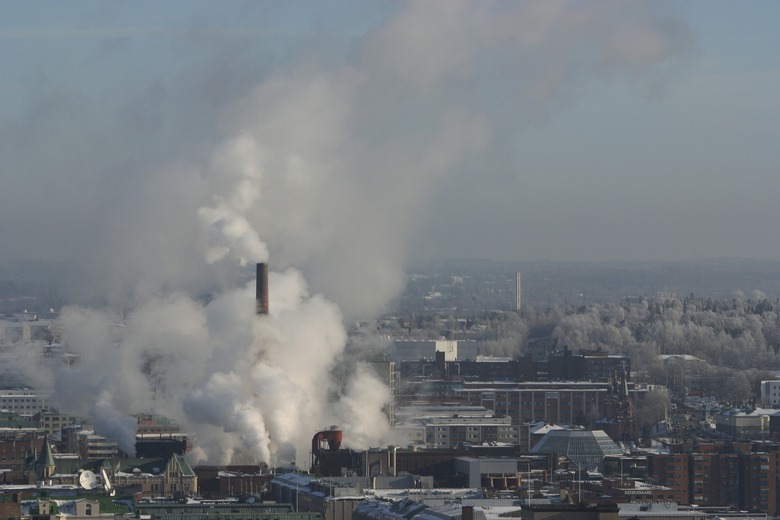The Effects Of Industrial Smog
Industrial smog is the original "smoke and fog" that gave this type of air pollution its name. It has plagued the city of London since the beginning of the Industrial Revolution and is sometimes called London smog. The conditions that produce it include foggy weather, a preponderance of smoke from factories and coal-fired stoves in the air and an inversion layer to push these to the ground. Experience demonstrates that it kills people.
Two Types of Poison
Two Types of Poison
People in North America tend to associate smog with the brown haze that blankets cities like Los Angeles and Denver on sunny days, but the original smog is different. It's a mixture of sooty smoke and moisture, and occurs in foggy, damp places, such as Great Britain as well as industrial cities on the East Coast of the United States. The main pollutant in photochemical smog, which is the type for which Los Angeles is famous, is ozone. The main pollutants in industrial smog, however, are sulfur dioxide and fine particles of tar, soot and ash.
Industrial Smog Kills
Industrial Smog Kills
Residents of London have had several notable smog events since the beginning of the Industrial Revolution in the late 1700s. Several of these occurred in the 1800s, including one in 1973 that caused a 40 percent increase in the death rate in that city. The worst event on record occurred in December of 1952. The "Great Smog" occurred during a series of cold days, when more people than usual were burning fires to stay warm. A large inversion layer over the city prevented the smoke from dispersing, and it became so thick that people couldn't see across the street. The official death count was 4,000, but 12,000 may have died as a result of the smog.
Related Health Effects
The people who have died during smog events have succumbed for four main reasons: heart attacks, bronchitis, pneumonia or tuberculosis. The tar in smog incapacitates the lungs, while the acidic air aggravates existing respiratory problems. Those who don't die during a smog event may develop a number of short- or long-term health effects, including inflammation of the lungs and permanent lung damage, reduced oxygen in the lungs due to a elevated levels of carbon monoxide and an increased risk of cancer. Children may become more susceptible to disease.
Add a Little Ozone
Add a Little Ozone
The Great Smog of 1952 prompted lawmakers in Great Britain to pass clean air legislation that has reduced factory emissions and prevented a similar event. Industrial smog still exists there, however, as well as in industrial centers in other countries, and it increasingly contains ozone, which is associated with automobile emissions. Industrial smog is highly acidic, because the sulfur dioxide mixes with rain droplets to form sulfuric acid. This has a corrosive effect on the lungs, as well as on stone, brick and metal structures and paint. Ozone adds to the corrosive quality of the smog, and it is a lung irritant, but it is present only when the sun is out.
Cite This Article
MLA
Deziel, Chris. "The Effects Of Industrial Smog" sciencing.com, https://www.sciencing.com/effects-industrial-smog-8152/. 24 April 2017.
APA
Deziel, Chris. (2017, April 24). The Effects Of Industrial Smog. sciencing.com. Retrieved from https://www.sciencing.com/effects-industrial-smog-8152/
Chicago
Deziel, Chris. The Effects Of Industrial Smog last modified March 24, 2022. https://www.sciencing.com/effects-industrial-smog-8152/
